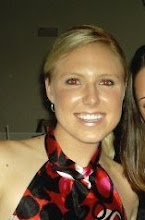The week of August 2-6, 2010 I attended the Teacher’s For A Better Belize (TFABB) Workshop. It was awesome. It was an old PCV, Mica, who is back in Texas, came back and teach strategies and development of early childhood. Also, Anne was the other teacher from the states, who did an excellent job on the workshop.
Some things I learned about cognitive development were:
Cognitive development is the of thought construction processes, including remembering, problem solving, and decision-making, from childhood through adolescence to adulthood.
Cognitive development includes information processing, intelligence, reasoning, language development, and memory.
When focusing on a child’s cognitive development, it is important to consider the following:
Pre-School children are often egocentric
Young children tend to focus only on what is apparent, ignoring other relevant attributes.
Young children may have difficulty accepting the idea that nothing can be undone.
Young Children may have difficulty with the idea that the amount of a substance remains the same, despite changes in its appearance.
Children often attempt to explain everything they see and hear by constructing theories!
Young children may ask lots of questions about human behavior and natural things.
Provide materials such as art, blocks, dress-up clothes are arranged for self-exploration
Encouraged children to learn through play (e.g., make up songs, games, etc.)
Provide scaffolding and guided participation activities where children learn from others who guide their experiences.
Physical development:
Gross Motor Development
This is the area of physical development that most parents think of first -- the child's general ability to move around and use the various parts of his body. Activities like rolling over, crawling, walking, running, and jumping are gross motor skills. These skills usually involve using the entire body or several parts of the body at one time.
Fine Motor Development
This term refers to skills that require smaller movements and more intricate capabilities. A generalization that is often made is that fine motor activities are skills that a child does with his hands. While this is not totally accurate, it is true that most fine motor activities involve a child's ability to use his hands properly. Overall, when we say that a child has appropriate fine motor skills, it means that he can use his hands appropriately for a child of his age.
2 year olds can:
Children become more comfortable with motion, increasing speed, and coordination. Most begin to:
Run forward
Jump in place with both feet together
Stand on one foot, with aid
Walk on tiptoe
Pull toys with string
Climb stairs holding on with two feet on each stair
Kick ball forward
Children are able to manipulate small objects with increased control. Most can:
Build tower of 6 blocks
String large beads
Use spoon well
Turn pages one by one
Imitate circular motions when shown by an adult
Paint with wrist action, making dots and lines
Roll, pound, squeeze, and pull clay
Hold crayon with whole hand (fingers straight)
3 Years Old:
Movement and balance improve. Most children can:
Run around obstacles
Balance briefly on one foot
Push, pull, and steer toys
Ride a tricycle
Use a slide without help
Throw a ball overhand, but catch clumsily
Children's precision of motion improves significantly. Most are able to:
Drive pegs into holes
Draw crosses and circles
Manipulate clay by making balls, snakes, etc.
Unbutton buttons
Build tower of 9 blocks
Draw person with head
4 Years Old:
Children are now more confident, and most are able to:
Walk backwards
Jump forward many times without falling
Jump on one foot
Walk up and down stairs without assistance, alternating feet
Turn somersaults
Play catch with a large ball
Standing broad jump
Children continue to develop their fine motor skills. Most can:
Cut with scissors (not well)
Copy squares and crosses
Draw person with head, feet, and body
Hold writing utensils with 3 fingers
Dress/Undress independently (except ties, buttons)
String small beads
Not switch hands in the middle of an activity
5 Years Old:
As they head into school, most are able to:
Hop and skip
Climb stairs holding an object
Walk on a straight line
Bounce and catch a tennis ball
Swing by him/herself
Balance on one foot
Children develop skills that will help them as they enter school and begin writing. Most can:
Build tower of 12 blocks
Tie shoes
Draw angled lines and triangles
Draw a person with a head, body, legs, and a face
Cut on straight lines
Print simple letters
Color in lines
My favorite part of the workshops was where they showed what an actual preschool looks like. We walked through a day of preschool. TFABB were the teachers and everyone else pretended to be a 3 or 4 year old. I got lots of ideas for centers to use in my classroom.
Disclaimer This website expresses the views of Grace Boswell, who is entirely responsible for its content. It does not express the views of the United States government, the Belize government, the Peace Corps or any other institutions named or linked to on these pages.
Subscribe to:
Post Comments (Atom)












No comments:
Post a Comment